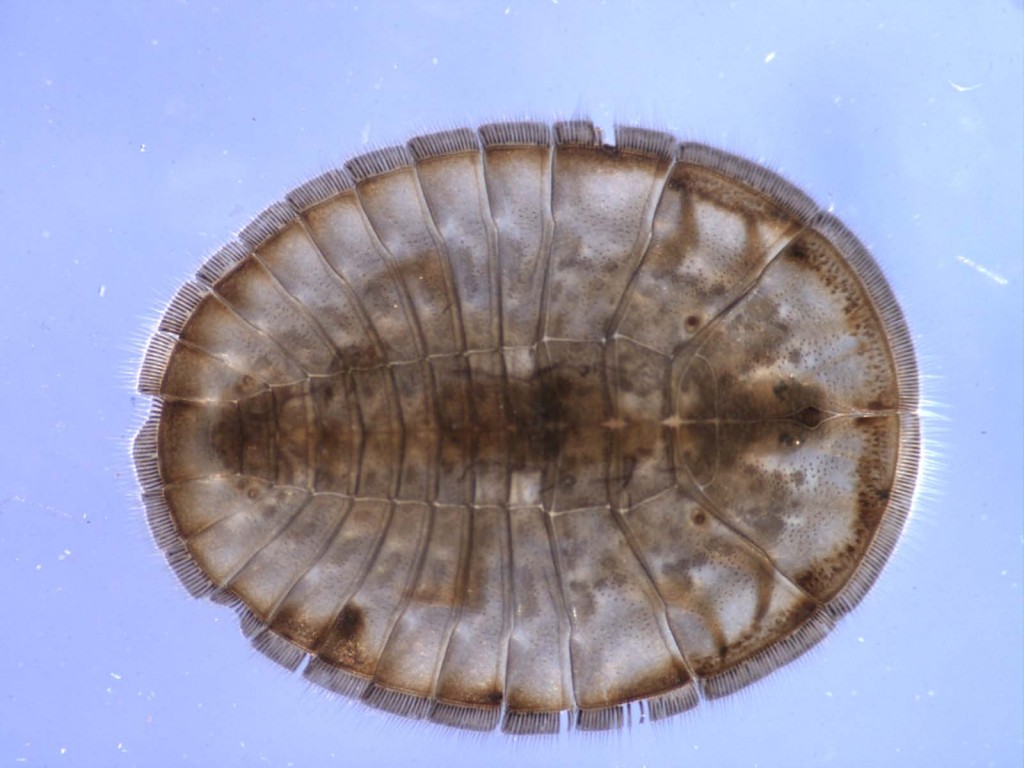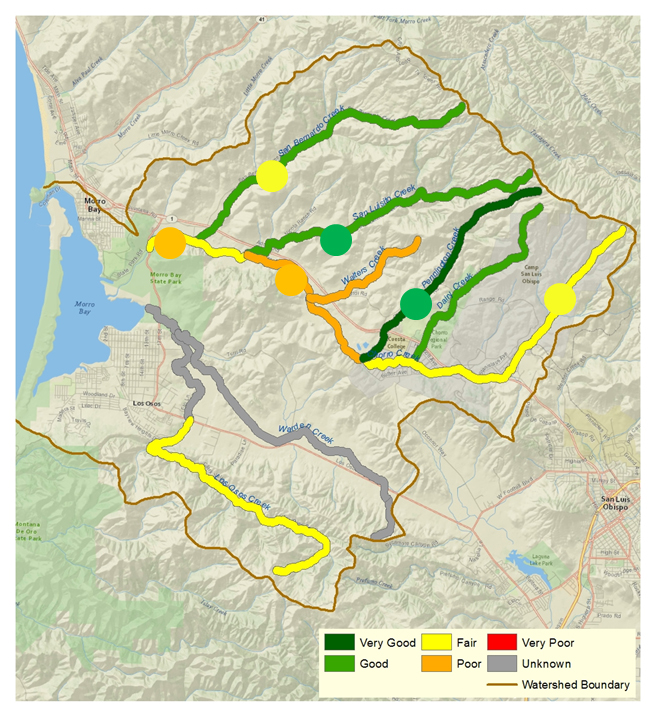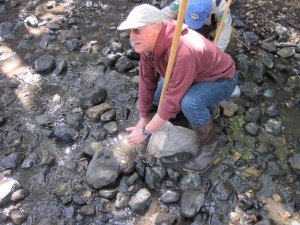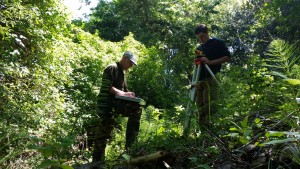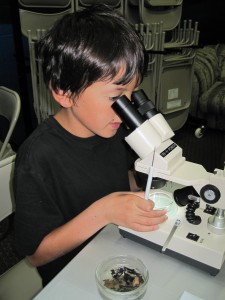Each spring, the Estuary Program and our volunteers engage in a bioassessment monitoring effort at a variety of sites along local creeks. This monitoring process follows a detailed protocol to collect habitat data and samples of macroinvertebrates or “macros,” which are insects that are visible to the naked eye.
Some macros are very sensitive to pollution, so if you find them in a creek, you know that the water quality is good. This water penny, for example, is found in the creeks in our watershed. It spends from one to two years of its life cycle in this larval stage. It is very sensitive to pollution, so when we find these in a creek, it is likely that the water quality has been good throughout its life. In creeks with poor water quality, pollution-sensitive species such as water pennies are rarely found.
The bioassessment monitoring protocol also involves collecting detailed habitat data, including measurements of the water depth, the creek bottom, and the canopy overhead. For more details on the monitoring effort, see this blog post from April of last year.
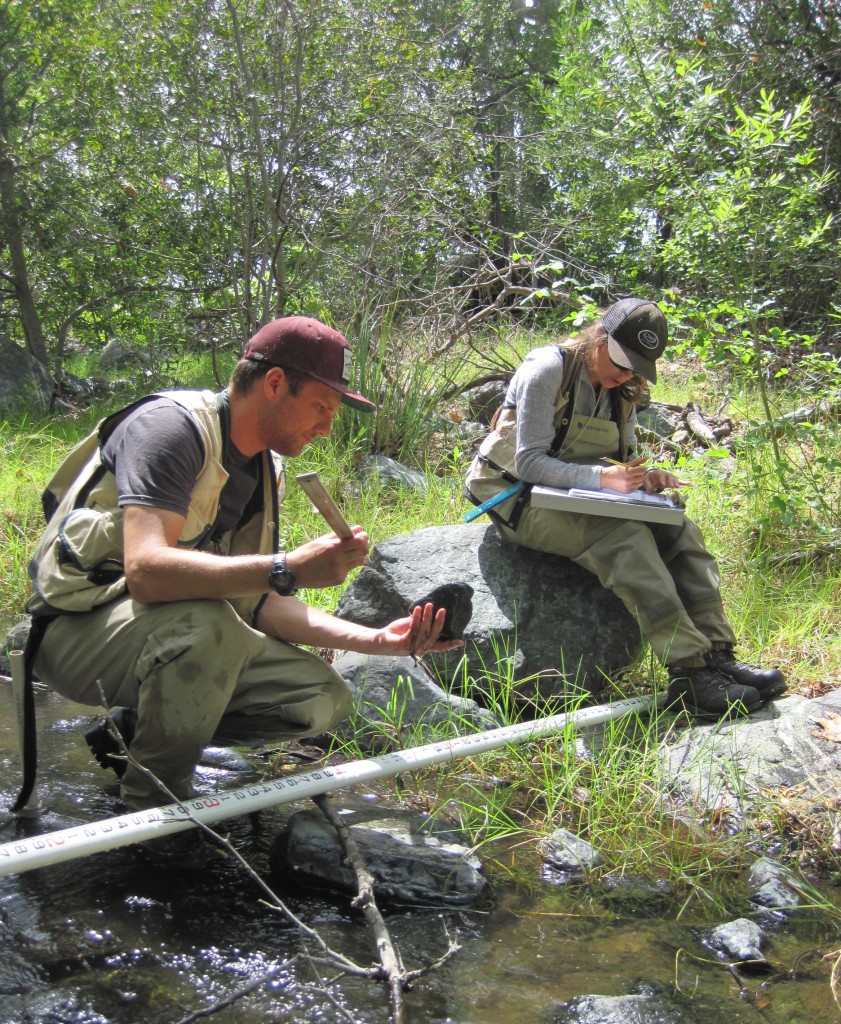
What are we learning from the bugs we collect?
Once we’ve collected the macro samples, we send them to a specialized lab for sorting, counting and identification. The lab provides us with a list and count of the macros identified. The lab uses the data to calculate a single health score for each bioassessment site. The colors of the creeks on the following map indicate the averaged scores from 2008 through 2014. Those coded green have high scores, which means the creeks have good water quality and habitat to support healthy bug and fish populations. Those coded yellow and orange have fair and poor scores.
The map below also contains a colored dot representing the score from the 2015 survey. Of the six sites monitored in 2015, three had downgraded scores compared to past scores (averaged data from 2008 through 2014). These decreases in score are likely due to factors such as lack of appropriate habitat, lack of water, and poor water quality. The lower than normal rainfall over the past few years was a likely contributor.
The Miossi Charitable Trust makes this valuable work possible.
A generous grant from the Harold J. Miossi Charitable Trust makes this monitoring possible. While volunteers do much of the work to collect the samples, the detailed lab analysis is a large expense.
Ann Kitajima, our Monitoring Program Manager, is very thankful for this generous support. As she says, “The Harold J. Miossi Charitable Trust allows us to maintain this bioassessment monitoring project, which serves multiple purposes. It provides an opportunity for college students and others to gain training in a real-life skill. It allows the Estuary Program to collect valuable data for tracking the health of our watershed’s creeks. It also lets us partner with the Morro Bay Museum of Natural History to help lead a macro program that is accessible for all ages.”
Get involved and learn by doing!
If you want to learn more about macros in the Morro Bay watershed, here are some dates to keep in mind:
April 16
The Estuary Program will lead a hands-on macro training for all interested volunteers, from 9 to noon. Click here to register.
May and June, various dates
Fieldwork is expected to take place throughout May and June. Each monitoring trip takes four to five hours, and dates will be offered both during the week and on weekends. Volunteers must attend the April 16 training in order to participate in the fieldwork, and any volunteer who participates in the training is asked to complete at least one fieldwork survey.
July 16
Morro Bay Natural History Museum docents will lead a macro-focused program for all ages. It’s a chance to see live and preserved bug samples under the microscope. Visit the Central Coast State Parks Association’s website in early July for more details on this program.
